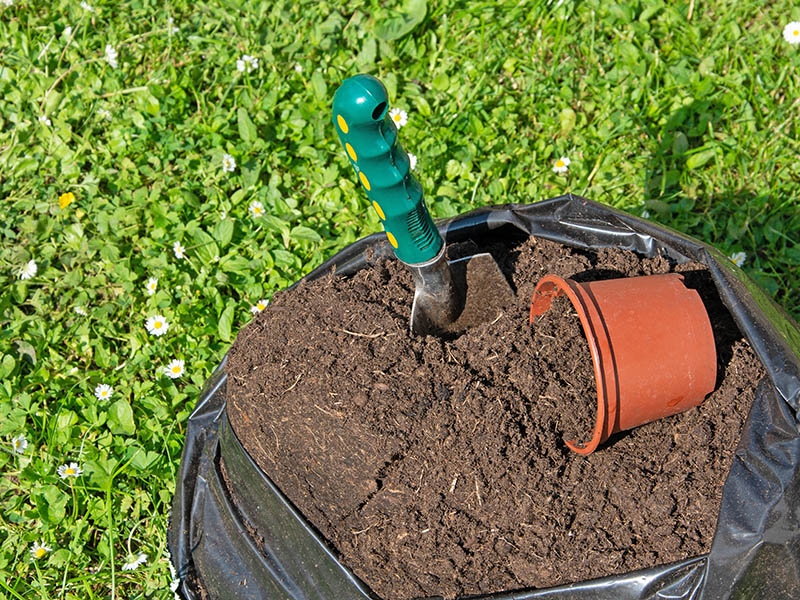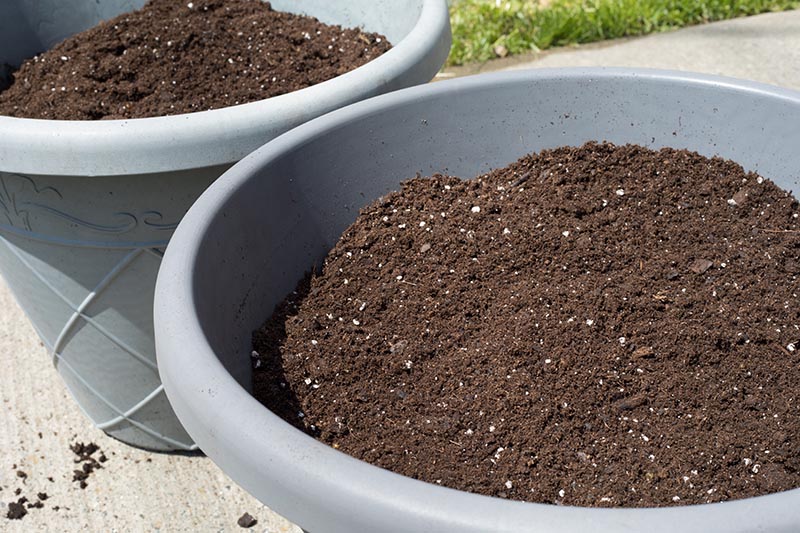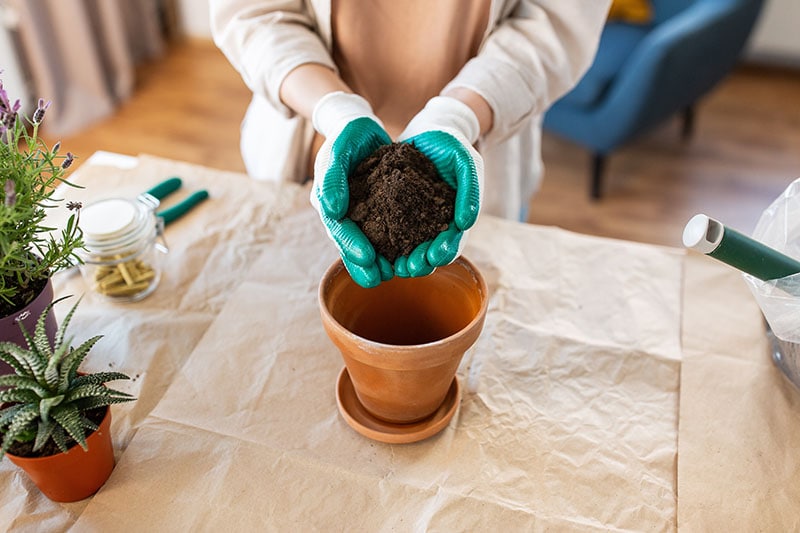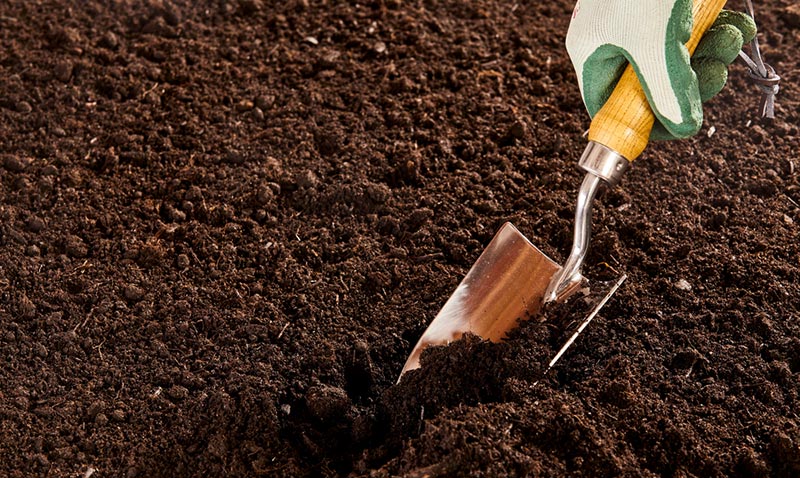How To Make Organic Potting Soil at Home: Step-By-Step Guide
-
Pete Ortiz
- Last updated:

Soil is a natural substance that’s composed of mountain stones and bedrock1. Its components or particles aren’t conspicuously large because they’ve been broken down over eons, by the various elements of nature.
We all know soil is key to our survival, as it contains beneficial living organisms that help nurture the plants that give us food. Your gardening project cannot be successful if your soil lacks the nutrients or microorganisms responsible for supporting plant life.
Procuring a healthy sample shouldn’t be an issue if you’re living near a garden store. If you prefer making your own organic potting soil at home—one that will give you the perfect mix of everything—this is the recipe to use:
Organic Potting Soil Recipe
- Perlite: This is a white granular substance that’s made from volcanic rock. It’s easy to confuse it with polystyrene, as they both have the same physical traits. Perlite is neither acidic nor alkaline and can be manufactured when its rock is heated to 1,800ºF. In comparison to sand, perlite holds more air and has better drainage.
- Sphagnum peat moss: This course-textured ingredient is a plant matter that’s already dead and decayed. It’s a key element of this process because it is known to facilitate good aeration and has a relatively high water-holding capacity. A high-water retention ability also implies that we can’t use too much of it, or we’ll be restricting the soil drainage.
- Vermiculite: This is the perfect substitute for perlite. Vermiculite is essentially clay, and a member of the complex hydrous potassium-aluminum silicate mineral family, known as mica.
- Sand: For this project, we’ll be using the same sand used in construction. It will also improve aeration and drainage, but not the mixture’s water-holding capacity. Be wary of the amount of sand you use if you want your garden containers to remain lightweight.
- Sterilized loam soil: This is the same soil that you already have in your garden. But if you want something different, you could buy some from the garden store. Sterilized means you’ve gotten rid of all the pests, spores, pathogens, and microorganisms that are deemed harmful, without altering the soil’s chemical composition in any way.

Side Note: You are allowed to scale up or down this recipe, depending on how much potting soil you need. If your project is a big one, you’ll obviously have to scale everything up. Just don’t forget to maintain the ratios because that’s what really matters. For example, if the sphagnum peat moss is being scaled up to 2 gallons from 1, all the other ingredients have to be doubled as well.
After gathering your ingredients, you’ll need to check your supplies kit just to make sure everything you’ll need is in there. A gardener’s kit should have:
- A small-to-medium tarp (optional)
- Protective eyewear
- Hydrogen Peroxide
- Mask (Particulate)
- Measuring tool
- Garden gloves
- Trowel
- Bushel basket
- Hand fork
Not all of these items will be useful in every situation. It’s all contingent on what you’re planting, and where.
The Step-By-Step Guide on Making Organic Potting Soil
1. Protect Yourself

As an activity, gardening has always been seen as an exercise that’s not only enjoyable but also relaxing. Having said that, we’re often quick to forget that it can also pose some health risks, especially if one intentionally decides to disregard all the safety precautions and/or use the wrong tools.
Wear your gloves, put on your mask, and don’t use any makeshift tool, if you don’t want to be part of the list of 87,000 individuals injured while gardening, every year1!
2. Sterilize The Soil
Collect some soil samples from your garden, so that we can start the sterilization process. If you want to skip this step, get the soil from a local gardening store. Commercially sold potting soils are normally sterilized.
To get rid of all those harmful organisms, you’ll have to prepare a solution that’s 3% hydrogen peroxide. Remember, it’s of vital importance that you’re accurate with the measurements, or you’ll inadvertently alter the soil’s chemical composition.
Add half a cup of hydrogen peroxide to a gallon of water. If you need an extra gallon, add a full cup. The peroxide’s quantity should be directly proportional to that of water. So don’t worry about the effects. Everything will be okay if you observe the ratios. Once your solution is ready, pour it into a sprayer, for easy application.
Next, we’ll need you to spread the soil on a well-laid-out tarp, creating a thick layer of 0.4 inches. The goal is to ensure no soil sections are left untreated or poorly sterilized. Start spraying the soil, but make sure you don’t go too hard to the point everything ends up being soaked. We only need it to be moist and not completely drenched.
Give the peroxide 3 to 4 hours to do its job, before moving on to the next step. If the soil is not dry by the end of the 4th hour, give it more time.
3. Mix the Ingredients

In this recipe, all the ingredients must be used in equal parts. Therefore, if the plan was to use a gallon of sterilized loam soil, you’d need the same amount of sand, sphagnum peat moss, vermiculite, or perlite.
Also, since sphagnum peat moss is difficult to dampen, you’ll have to moisten it beforehand by adding a wetting agent. Adding it into the mixture in that dry state might complicate the process.
Add the sterilized soil into a clean basket, and then add an equal amount of moist sphagnum peat moss. The next ingredient should be sand, and finally perlite or vermiculite.
4. Adjust The Texture
Gardeners have different preferences when it comes to soil texture—plants, as well. So, if your organic potting soil sort of looks too sandy, you’ll need more sphagnum peat moss. You’ll also need to add more moss and sand if it’s too sticky. The sand will counter the water retention effects of adding more sphagnum peat moss.
Keep on adjusting the texture until you get a feel and consistency that pleases you.
Organic Potting Soil Dos & Don’ts
This is a reminder of what you should or should not be doing while making organic potting soil at home.
Do Add Moisture-Maintaining Ingredients

Even though sphagnum peat moss has always been regarded as a conventional ingredient in the creation of organic potting mixes, we still have several other substances that could act as incredible substitutes.
For example, compost and coconut coir. The advantage of using either compost or coconut coir is that you don’t have to add a wetting agent beforehand.
Do Add Any Drainage-Supporting Ingredient
Soil drainage is important because it facilitates aeration. Most of our plant varieties can’t comfortably grow in clay soil, seeing as it usually forms tight layers that don’t encourage drainage. That’s why our prime ingredients are coarse builder’s sand, vermiculite, and perlite. All these substances are known to have good drainage in comparison to clay.
Do Maintain a Proper pH
Sphagnum peat moss has a pH of 4.5. That’s a problem, given most of our plant nutrients thrive when the pH ranges from 6.5 to 7.5. To resolve this issue, you’ll have to add lime to the mixture.
But you can’t add too much lime, as that might make your organic potting soil too alkaline. You can eliminate the need for lime by using coconut coir in place of sphagnum peat moss.
Don’t Use Unsterilized Loam Soil

Soil sterilization is the only way you’ll be able to guarantee that you’re promoting plant health, by eliminating pestilent microbial populations. Don’t assume the soil is “good to go” just because you can’t find any weed seed, insect egg, or disease spore. It’s better to be safe than sorry.
Don’t Add Too Much Sand
Your gardening containers will weigh a ton if you keep on adding sand into the mixture. You’re only allowed to add more sand if the plants you plan to pot up have a heavy top. A heavy top means that the soil below should be heavy as well, to balance out the effect. The weight of the sand will be critical in that situation, as it’ll be acting as a stabilizing base.
Conclusion
An organic potting soil recipe is no different from that of cake or bread. So be ready to keep on adding this ingredient or that, until you get a mix that’s neither too sticky nor too dry. All kinds of moisture-retaining ingredients will help you reduce the dryness, while the drainage-supporting ingredients make it less sticky.
Once you’re done mixing, you’re advised to store the potting mix in a tightly covered plastic container, until you’re ready to start planting.
Featured Image Credit: M. Schuppich, Shutterstock
Contents



